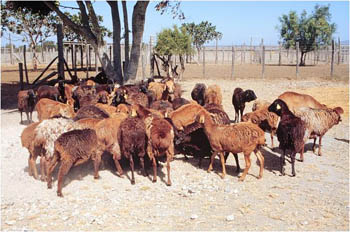|
Exploration & description/Fixed and random effects |
||
|
A random effect is a component of
the data that has a degree of randomness associated with it,
whereas a fixed effect has no random connotation. An example
of a fixed effect in this case study would be the sex of a lamb.
It is fixed because it can only have one of two values: male and
female. On the other hand, the influence of the ram on the growth
of its offspring is usually considered to be a random effect. In
making this assumption the researcher assumes that the sample of
rams used in the study is a random selection of rams from the
particular genotype at large. |

|
|
|
The choice of whether an effect such as breed is fixed or random is not always obvious. In this example there are only two breeds of ram and so it would not be sensible to infer that these two breeds are a random sample from a much larger population of ram breeds. This is not only because they were specifically chosen for this study, but also because a sample of two would not be considered large enough to generalise to “all breeds”. Here the possibility of year being random might also been considered. Six levels, as here, are probably about the minimum number that could be considered as adequate for estimating random components. Thus, for a study carried out over only three or four years, the sample would be hardly large or random enough to be representative of a wider population of years. |
||